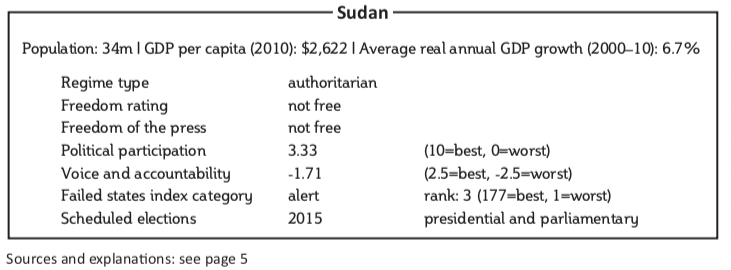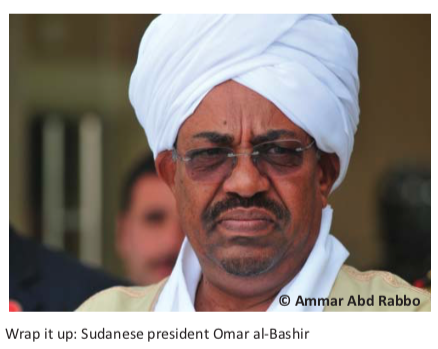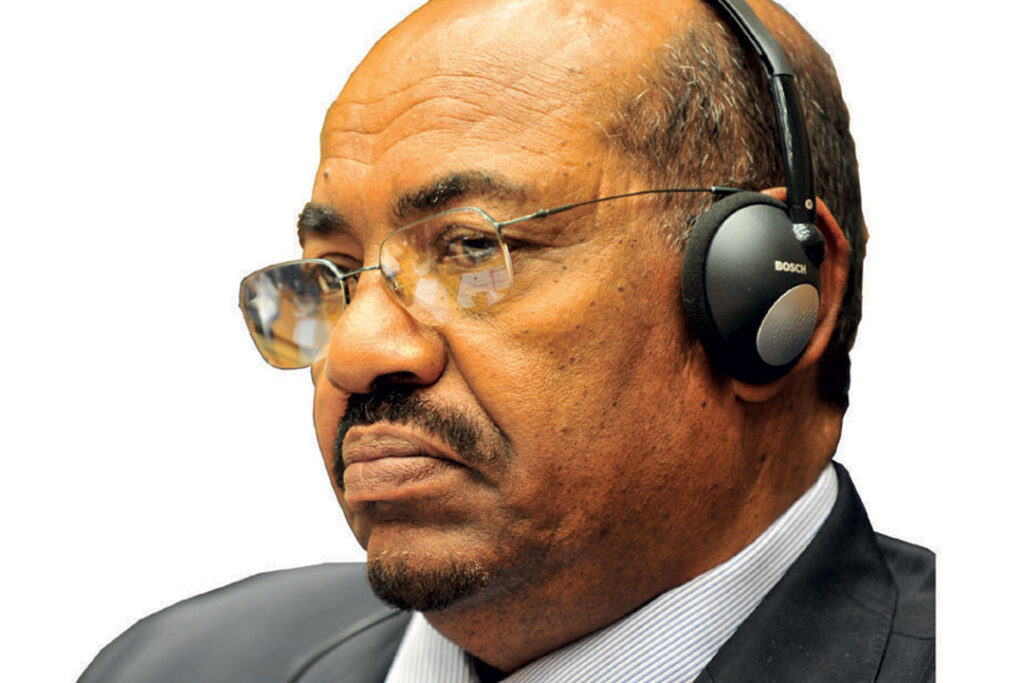Sudan may have new borders but the old opposition is still battling Khartoum.
by Simon Allison
When South Sudan seceded, the opposition remaining in Sudan regrouped: fighting intensified and new alliances emerged.
South Sudan, Africa’s newest country, celebrated its independence on July 9th 2011 after an agreement between the Sudanese government in Khartoum and the Sudan People’s Liberation Movement (SPLM). With the most organised and effective of Sudan’s rebels subsumed into the new state, Khartoum felt free to focus its attention and resources on other rebel groups in Darfur province in the west.
The SPLM, however, was never an exclusively southern movement. Nor, for most of its history, did it want secession. The SPLM had opposed state imposition of Islamic law, the concentration of political power in the hands of Omar al-Bashir, Sudan’s president, and the exploitation of Sudan’s southern oil wealth by the north. To this end, former SPLM leader John Garang always favoured a unified Sudan and campaigned hard to extend the SPLM’s support base across the country. It worked: the organisation attracted recruits of various ethnicities and religions from all over.
But after the death of the charismatic Mr Garang in a suspicious helicopter crash in 2006, the SPLM’s leaders opted to pursue the narrower, more achievable goal of the south’s secession. Once the new border was drawn, however, some party members found themselves on the wrong side, in the north, still under the control of the old enemy they had been fighting all these years: Mr Bashir’s government. They were not ready to give up the fight just yet.
Thus was born the SPLM-North, a new political party—with an armed wing, of course—that is separate from but intricately connected to the SPLM proper, and with similar grievances against the government.
“The movement is one movement,” said Sabir Ibrahim, the SPLM-North’s representative to Southern Africa and the Indian Ocean islands, in an interview with Africa in Fact. “We have people from all over Sudan and South Sudan. But now it doesn’t make sense to have one party across two states.”

The SPLM-North did not waste time in challenging Khartoum’s authority in the border states of Blue Nile and South Kordofan, where the SPLM had always enjoyed much support and recruited many of its soldiers. “In Sudanese history, these regions have always been famous for producing warriors,” Mr Ibrahim said. The first challenge was political, with a concerted effort to unseat the ruling National Congress Party (NCP) candidate in elections for governors. When this failed—thanks to rigged elections, claims the SPLM-North—the fighting began.
A number of rebel groups, most of which are armed and dangerous, operate in Sudan. Of these, the SPLM-North has swiftly attracted the brunt of Khartoum’s military response and inflicted damage of its own. “The SPLM-North has ideology, experience and military capacity. They know the enemy,” Mr Ibrahim said.
Although figures are impossible to verify, fighting in South Kordofan and Blue Nile is estimated to have killed hundreds and displaced hundreds of thousands more. Many refugees have fled into South Sudan, creating a humanitarian emergency there. Human rights groups have sharply criticised Khartoum for its handling of the situation. They allege that the regime is repeating its tactics from Darfur, resorting to an indiscriminate use of force to devastate the civilian population and blocking any humanitarian intervention that might help.
Even more significantly, the SPLM-North has leveraged the vast diplomatic experience of leaders like Yasir Arman, its secretary-general, and Malik Agar, its chairman—both former stalwarts of the SPLM proper—in an attempt to unify the notoriously divided Sudanese rebel movement. This culminated in the founding of the Sudan Revolutionary Front (SRF), a rebel alliance committed to the overthrow of the regime in Khartoum and the establishment of a representative, secular government in its place.

An impressive collection of opposition groups fall under the SRF umbrella. From Darfur: the powerful factions of the Sudan Liberation Movement, aligned respectively with Abdel Wahid al-Nur (SLM-AW) and Minni Minawi (SLM-MM); the Justice and Equality Movement (JEM) of Khalil Ibrahim, who was killed shortly after ratifying the SRF program; from the new south, is the SPLM-North; from central Sudan, factions of the Ummah Party and the Democratic Unionist Party.
The SRF has already established a joint military command under veteran SPLM fighter Abdel-Aziz al-Hilu, and a joint political structure, headed by Mr Agar. Clearly, the imprint of the SPLM-North—and by implication, the SPLM proper—dominates the new alliance. Still, unity has to start somewhere, and Mr Arman believes all involved parties are reaping the rewards: “You compare our situation before we came together. Now we have one military commander and now the government forces … are in bad shape; they are over-stretched, from Darfur to Blue Nile,” he told Africa in Fact. “The government is preparing for the dry season offensive and they were hoping they were going to crush us, but this alliance makes it more difficult than any time before for the regime to win the dry season offensive.”
For Mr Arman, the key to the SRF’s success is to bring even more political parties and other marginalised elements of society on board. “The SRF is a huge step towards the future. But it needs more opening up, it needs to reach more forces: youth, women, different political groupings who believe in the same cause of transformation and change.”
Mr Arman’s analysis is fair. “It has potential,” said independent analyst Jens Pedersen, based in
South Africa. “It’s not there yet. It is a military alliance moving towards a strategic political alliance. But so far, it still seems more like a military alliance.” He points out that in its short history Sudan
has never been afraid of toppling leaders and regimes, but that the impetus for previous power changes has always come from student organisations and the unions, not armed groups. The SRF will have to appeal to this demographic before it becomes a serious threat to Khartoum’s stability.
So far, the SRF has limited support among these groups. A spokeswoman for Girifna, a student movement responsible for some of the largest public protests against the Sudanese government, told Africa in Fact in an e-mail that they are concerned by the SRF’s willingness to use violence to effect change. “We agree that the NCP needs to go, but don’t agree with them on the tools as we are a peaceful resistance movement that believes that change should come from the majority of citizens (through civil disobedience) who are not holding guns, and not a minority that have chosen war as the solution.”
The SRF and Sudan’s opposition have a long way to go before they can hope to unseat Mr Bashir and his government. There is no doubt, however, that the secession of the south has dramatically altered the dynamics of the conflicts between Khartoum and rebel groups. The SPLM-North’s initiatives to unite the armed opposition under one umbrella make the SRF a greater threat than the sum of its parts. Maintaining this unity will prove difficult as Khartoum has mastered the art of divide and rule. But if the SRF can join hands with civil society movements such as Girifna, Khartoum may have something to worry about.



